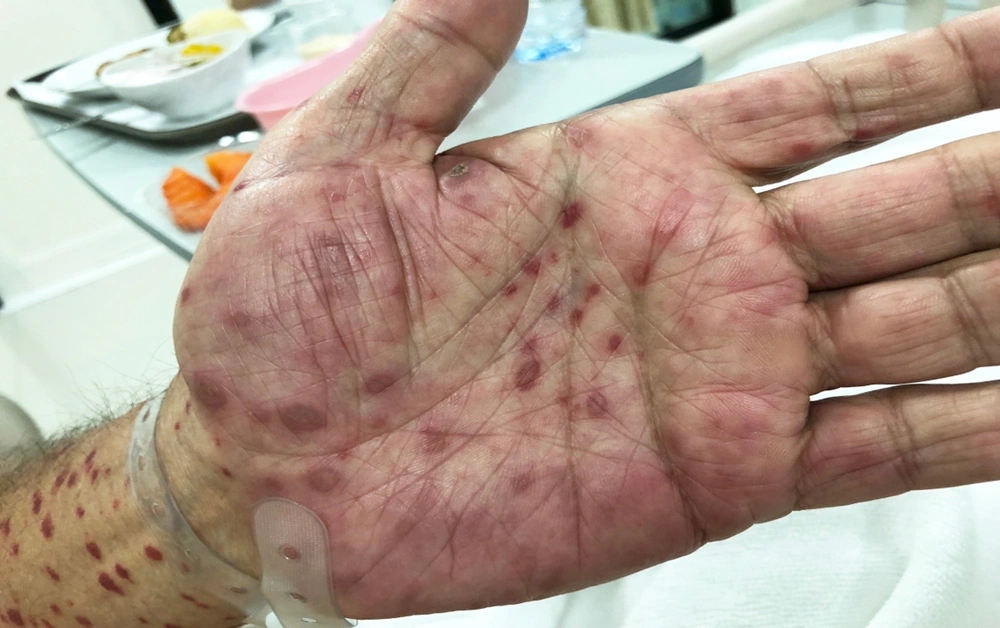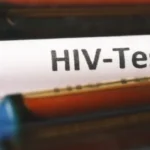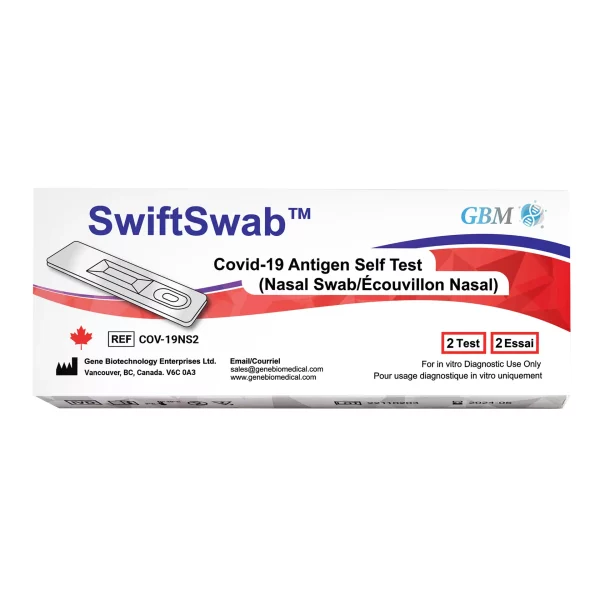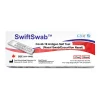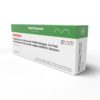Though a syphilis rash may look innocent, its appearance signifies the second stage of a syphilis infection.
Here’s why you need to recognize this rash to detect syphilis early.
Syphilis rash characteristics
Syphilis, a sexually transmitted infection caused by the bacterium Treponema pallidum, manifests through various stages.
While each of these stages has distinct symptoms, the hallmark of the secondary stage of syphilis is the appearance of a rash. This serves as a key indicator for your diagnosis, yet it can appear differently in each person, often leading to confusion with other dermatological conditions.
With syphilis, the rash can or is:
- Cover large areas of your body
- Commonly show up in the palms of the hands and the soles of the feet
- Present as rough, red or reddish-brown spots, which can be faint sometimes
- Usually not itchy
At what stage of syphilis do rashes start to appear?
The secondary stages occur weeks to months after the initial infection.
When a distinctive rash appears, it tends to be more pronounced on lighter skin and more subtle on darker skin tones. Because of this, the rash may resemble those from other diseases. This can also lead to misdiagnosis, or you may not notice it at all.
How do you treat syphilis?
Treating syphilis early is pivotal in preventing the progression of the disease to more serious health issues. On the other hand, delayed treatment can lead to severe complications that are at worst, fatal.
If you’re diagnosed with syphilis, your healthcare provider will prescribe antibiotics as your treatment plan. Penicillin, in particular, is highly effective when administered during the early stages.
After your treatment, it’s recommended to undergo regular testing to monitor the intervention’s effectiveness and ensure the infection has been eliminated.
At the same time, you must inform your sexual partners of your condition to prevent reinfection and halt the disease’s spread. They then would need to test for syphilis to learn of their infection status.
When should you contact a doctor?
Seek medical advice if you:
- Notice any unusual rashes, particularly those that resemble the characteristics of a syphilis rash
- Have had unprotected sex
- Suspect that you may have been exposed to syphilis
- Have partners who have been diagnosed with the infection
Early medical intervention is key to successful treatment and preventing the spread of syphilis.
Is syphilis 100% curable?
Yes, syphilis is 100% curable with timely and appropriate treatment. Once you’re diagnosed with syphilis, you can follow a comprehensive treatment plan and regular medical follow-ups to ensure the disease is fully eradicated. It’s possible to lead a healthy life post-treatment but you must remain vigilant for any signs of recurrence.
With proper care, precaution and education on safe sex practices, you can successfully overcome syphilis and minimize its impact on your life.
Can you get syphilis again after you’ve been treated?
Yes, it is possible to get syphilis again after treatment. Being treated for syphilis once does not provide immunity against future infections.
With proper care, precaution, and education on safe sex practices, you can successfully overcome syphilis and minimize its impact on your life.
What is the outlook for people with syphilis?
It’s highly positive if the infection is diagnosed and treated early. With appropriate antibiotic treatment, most people recover completely without long-term health issues.
That said, the key to a favorable outcome is early detection and adherence to the treatment plan prescribed by your healthcare provider.
If syphilis is diagnosed late, particularly in its later stages (such as latent syphilis or tertiary syphilis), the outlook can be more complicated compared to early detection. Late-stage syphilis can lead to serious, potentially irreversible complications, including:
- Neurological damage. Syphilis can affect your brain and nervous system (neurosyphilis), and this can cause headaches, paralysis, sensory deficits or even dementia.
- Cardiovascular problems. It can damage your heart and blood vessels, which can potentially lead to aneurysms, heart valve disease, or other life-threatening conditions.
- Organ damage. Untreated late-stage syphilis can also affect the liver, bones and other organs. This can lead to widespread dysfunction.
However, even in the late stages, syphilis can still be treated with antibiotics. Unfortunately, any damage already caused by the infection, especially neurological or cardiovascular damage may be permanent.
Frequently asked questions
What are the characteristics of a syphilis rash?
A syphilis rash often appears as rough, red or reddish-brown spots on the palms of the hands and the bottoms of the feet. This rash may not cause itching and can be accompanied by other symptoms.
Can a syphilis rash appear on other parts of the body?
Yes, while commonly found on the palms and soles, syphilis rashes can manifest on other body parts, including the torso and limbs. They may present as small, flat, or slightly raised areas.
How does a syphilis rash differ from other rashes?
Syphilis rashes are unique due to their location on the palms and soles, a rare site for most other rashes. Additionally, these rashes are often accompanied by systemic symptoms like fever and malaise.
Is the syphilis rash always present in infected individuals?
No, not all individuals with syphilis will develop a rash. The rash appears during the secondary stage of the infection but may be absent in some cases.
Key takeaway
Knowing what a syphilis rash looks like is crucial for early diagnosis and treatment of syphilis.
These distinctive rashes can usually appear on your palms and soles, and they can appear during the secondary stage of the infection. Since they’re not itchy, these rashes can often go unnoticed.
Check out our syphilis test kit and get tested from the privacy of your home.
